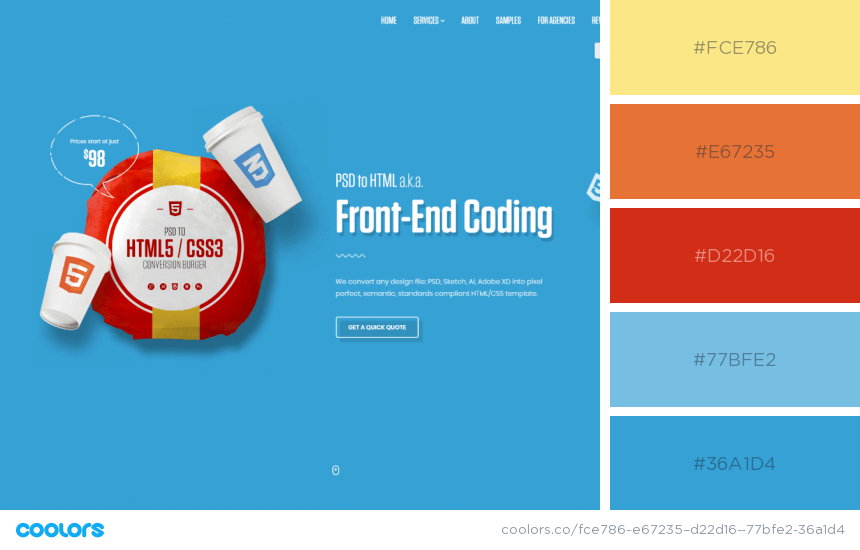Tube Rank: Your Guide to Video Success
Discover tips and insights for optimizing your video presence.
Color Your Way to Conversion: The Secret Language of Website Schemes
Unlock the secret power of colors! Discover how the right website scheme can boost conversions and captivate your audience.
Understanding the Psychology of Color: How to Optimize Your Website's Palette
The psychology of color plays a vital role in website design, as different colors evoke various emotions and reactions from visitors. Understanding how colors interact with human emotions can help you craft a website that resonates with your audience. For instance, blue often conveys trust and reliability, making it an excellent choice for financial institutions, while warm colors like red and orange can incite feelings of excitement and passion, ideal for e-commerce sites looking to boost sales. By strategically selecting your website's palette, you can enhance user experience and encourage desired actions.
When optimizing your website's color scheme, consider the following key aspects:
- Brand Identity: Choose colors that align with your brand's personality and values.
- Readability: Ensure that text contrasts well with the background to maintain readability.
- Emotional Impact: Select colors that evoke the emotions you want your users to feel
- Consistency: Maintain a consistent color palette throughout your site to reinforce brand recognition.

Color Contrast and Accessibility: A Guide to Inclusive Web Design
Color contrast plays a critical role in ensuring accessibility in web design. High contrast between text and background colors ensures that content is readable for a wide range of users, including those with visual impairments. The Web Content Accessibility Guidelines (WCAG) recommend a minimum contrast ratio of 4.5:1 for normal text and 3:1 for large text. By carefully selecting your color palette and testing the contrast, you can create an inclusive experience that enhances navigation and usability for all visitors.
Incorporating color contrast into your design doesn't just benefit users with disabilities; it enhances the overall user experience. When implementing contrasts, consider using tools like color contrast checkers to verify your choices. Additionally, provide alternative means of conveying information, such as text labels and icons, alongside color cues. This way, you ensure that your website is not only aesthetically pleasing but also meets the needs of all users, regardless of their abilities.
What Color Scheme Works Best for Conversions? Key Factors to Consider
When it comes to choosing a color scheme that thrives on conversions, there are several key factors you should consider. First and foremost, the psychology of color plays a vital role in how your audience perceives and interacts with your content. For instance, blue often evokes feelings of trust and security, making it a popular choice for financial institutions, while orange can stimulate action and encourage impulse buying. Additionally, it’s essential to maintain a balance of contrast in your design, as high contrast can guide users’ attention to important calls to action (CTAs), such as buttons or links.
Another critical aspect to consider is the demographic of your target audience. Different age groups and cultures may respond uniquely to various color schemes. For example, younger audiences might be attracted to bright, vibrant colors, while older users may prefer more muted tones. It’s also advisable to test different color combinations through A/B testing to see which ones yield higher conversion rates. Ultimately, your choice of color scheme should align with your brand identity, resonate with your audience, and create a sense of urgency or reassurance that prompts users to take action.